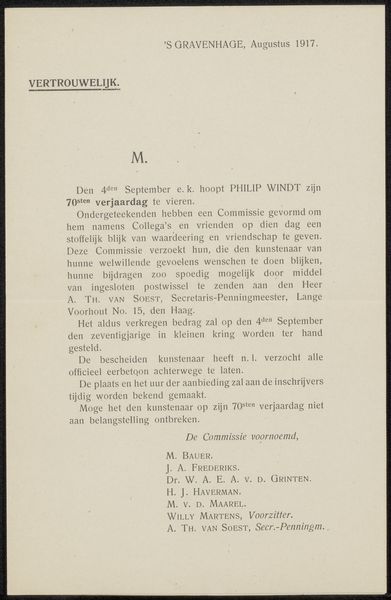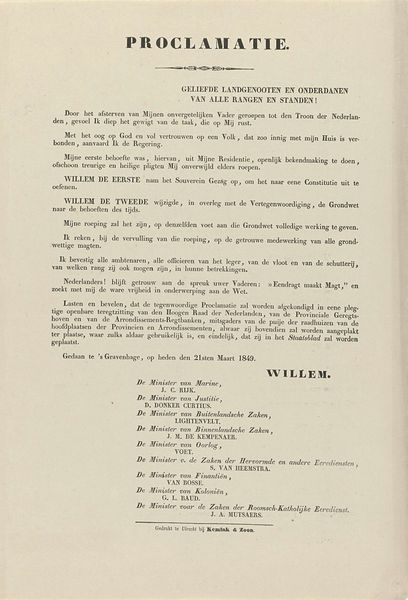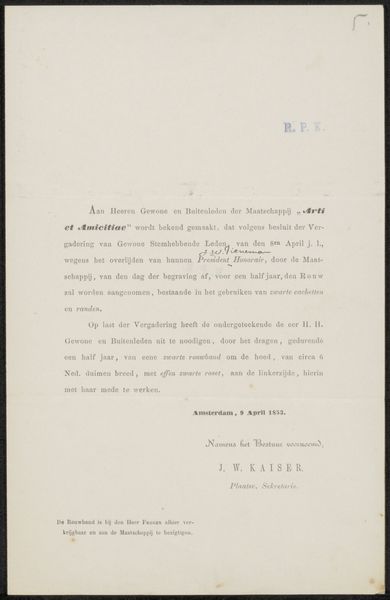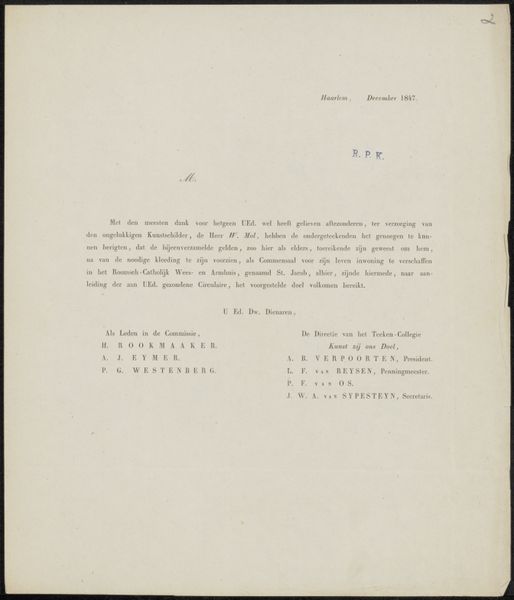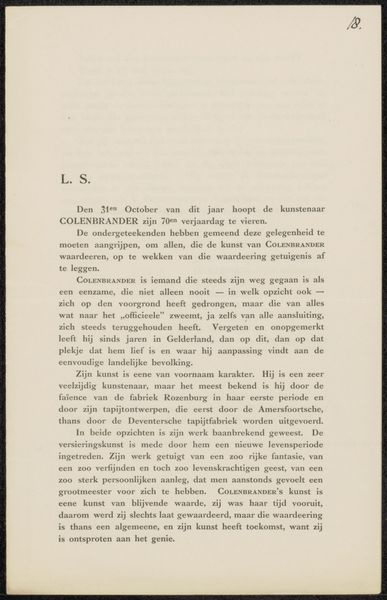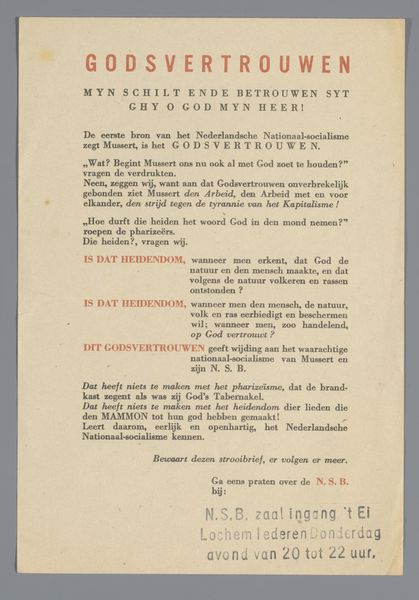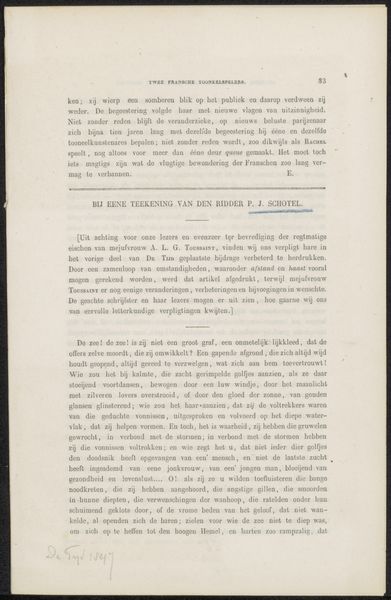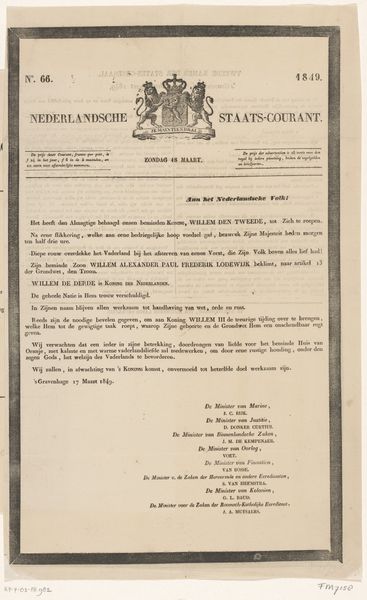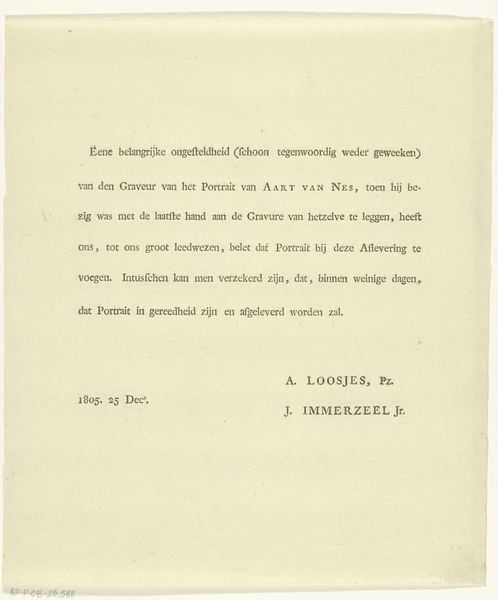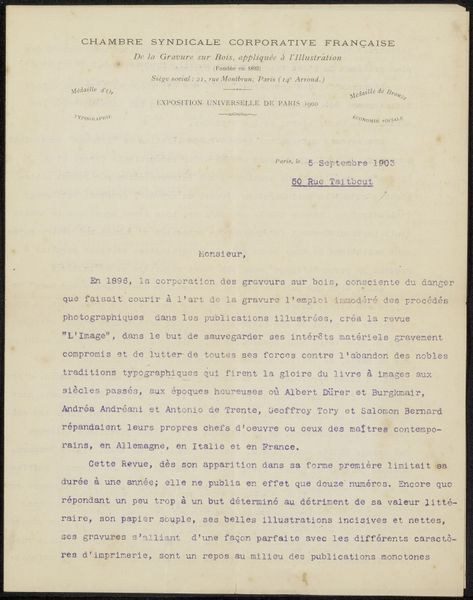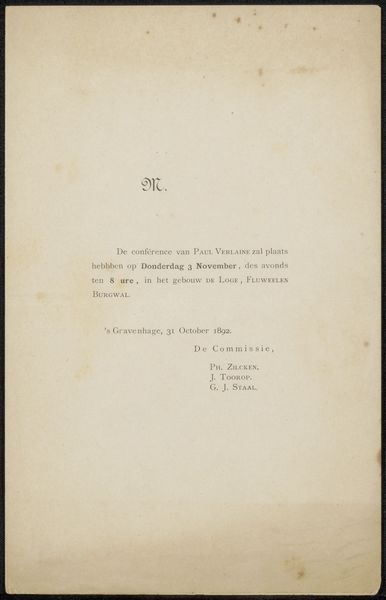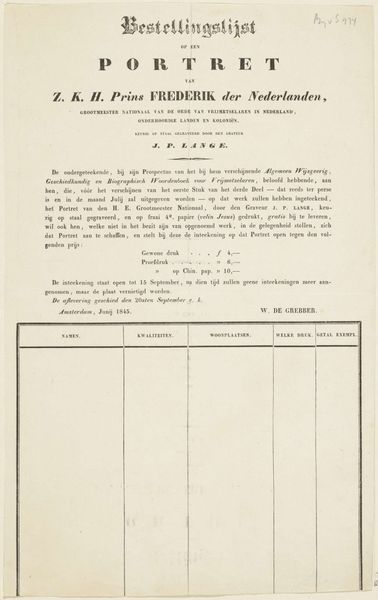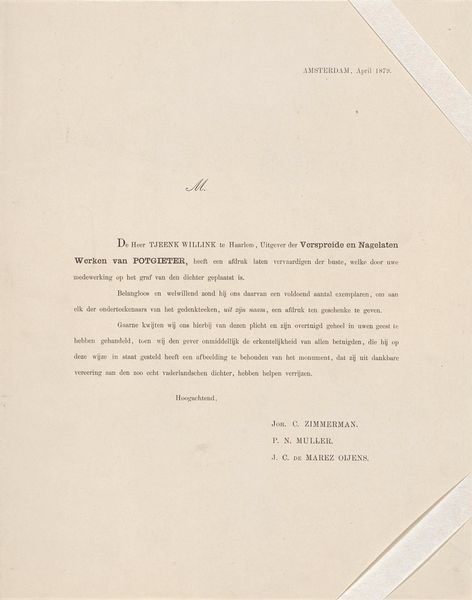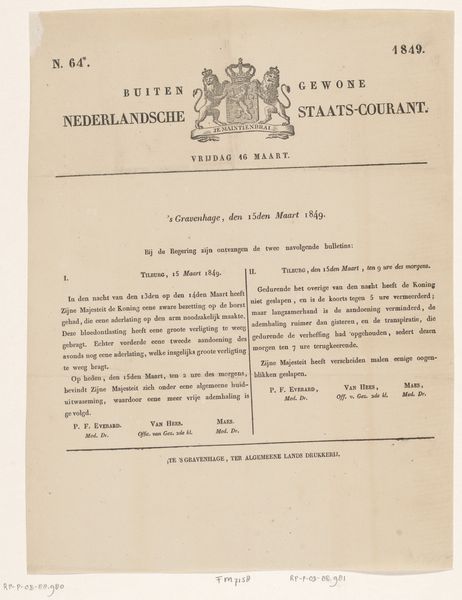
graphic-art, print, paper, typography
#
graphic-art
# print
#
paper
#
typography
Copyright: Rijks Museum: Open Domain
Editor: Here we have a printed document from 1924, "Intekenbiljet voor het Breitner-Witsen Fonds"—a subscription form for the Breitner-Witsen Fund, held at the Rijksmuseum. It looks like it was printed on paper using typography. It seems rather bureaucratic; what do you make of it? Curator: Well, let’s consider the materiality of this “Intekenbiljet”. Paper, typography – these weren't just neutral carriers of information. In 1924, paper quality and printing methods reflected socio-economic realities. Was this mass-produced on cheap paper, or carefully printed for a specific elite? How does the choice of typography influence its message? Who had access to this kind of printed material, and what does that tell us about the art world at the time? Editor: That’s interesting! So, even the type of paper speaks to a specific social class or economic status? I hadn’t considered that. It's like the document itself becomes an artifact representing a particular consumer culture, right? Curator: Precisely. This form wasn't simply about raising money; it was constructing a social relationship, defining who was "in" and who was "out" of the art patronage system. The act of donating becomes tied to visibility and social standing. The Breitner-Witsen Fonds—who were Breitner and Witsen, and how does their artistic production influence this exchange of capital? What kind of societal value did they have, or were trying to have, during their active years as artists? Editor: Right! I'm seeing now how the Fund relates to labor - the labor of Breitner and Witsen, now turned into financial capital. Curator: Exactly. It all circles back to materiality and how that plays within socioeconomic relationships. Editor: Okay, I learned that what looks like a basic administrative form really tells a complex story about the social and economic contexts surrounding art patronage. Curator: Indeed. Seeing art through the lens of materials and production opens a whole new avenue for understanding its place in society.
Comments
No comments
Be the first to comment and join the conversation on the ultimate creative platform.
